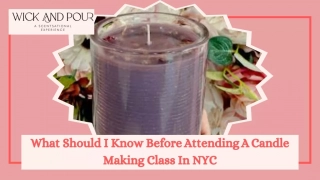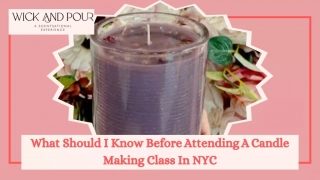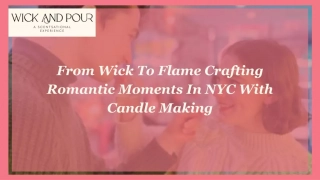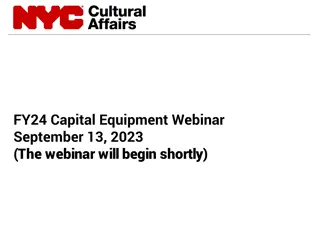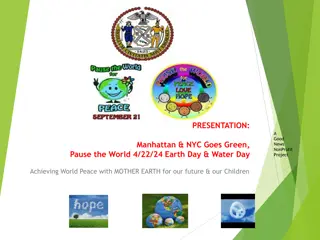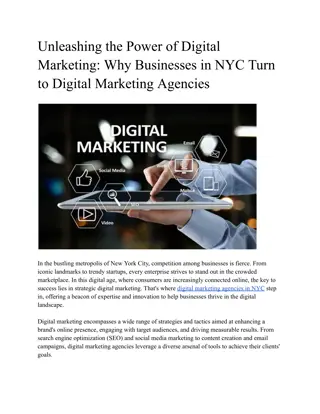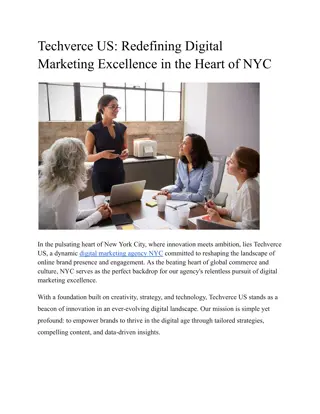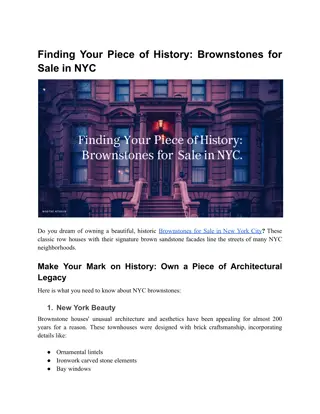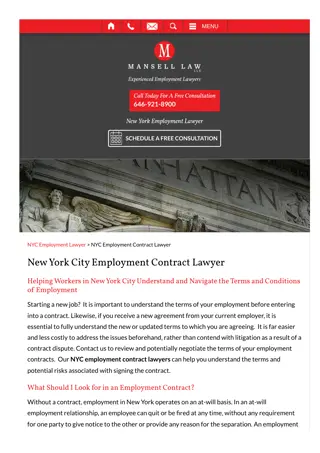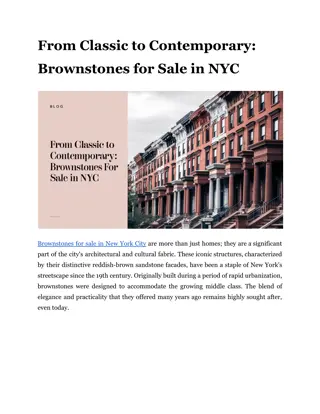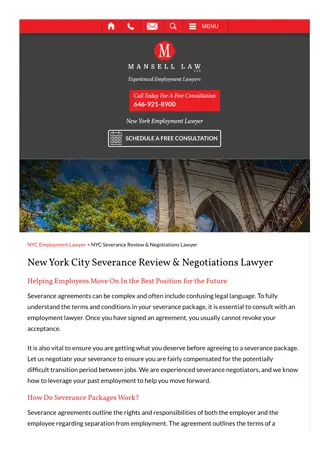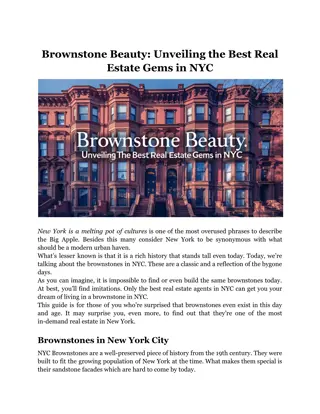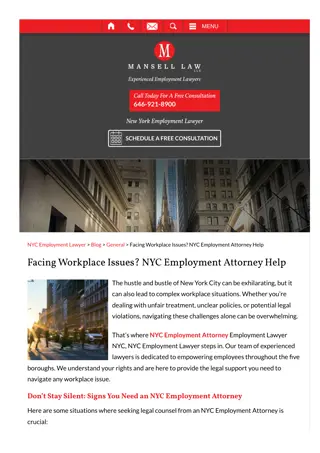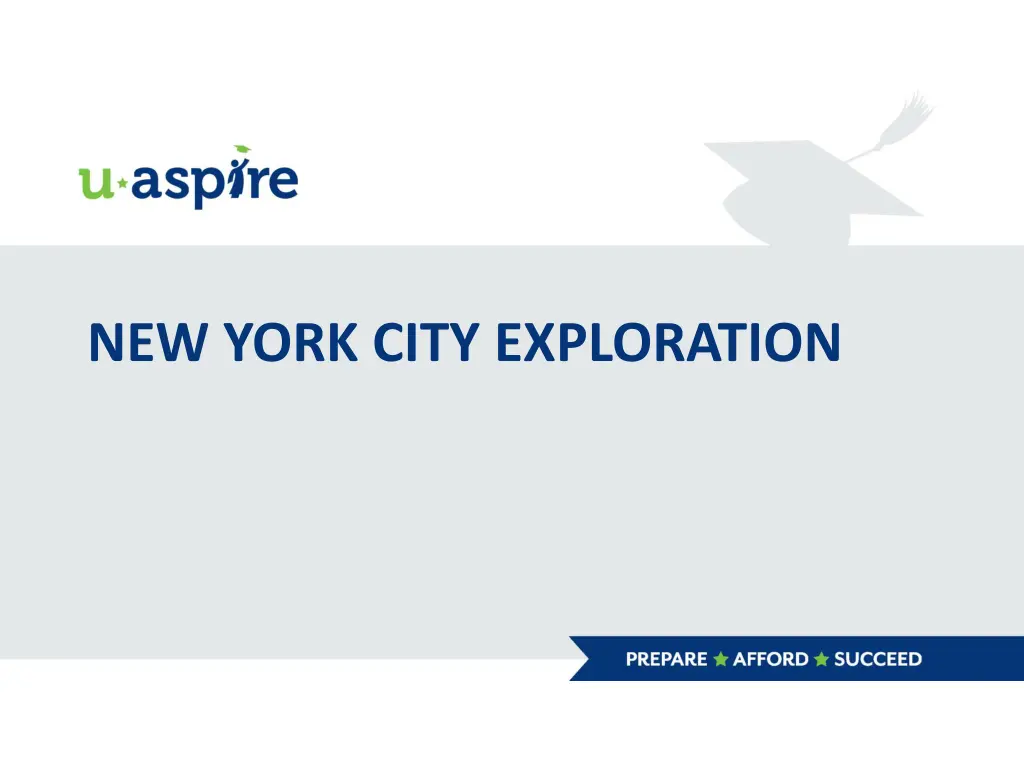
NYC Exploration and College Affordability Study Overview
Explore the journey of uAspire in understanding college affordability in New York City through landscape studies, findings, research questions, and methods. Discover how schools and non-profit organizations are addressing affordability issues and the gaps that exist in services.
Download Presentation

Please find below an Image/Link to download the presentation.
The content on the website is provided AS IS for your information and personal use only. It may not be sold, licensed, or shared on other websites without obtaining consent from the author. If you encounter any issues during the download, it is possible that the publisher has removed the file from their server.
You are allowed to download the files provided on this website for personal or commercial use, subject to the condition that they are used lawfully. All files are the property of their respective owners.
The content on the website is provided AS IS for your information and personal use only. It may not be sold, licensed, or shared on other websites without obtaining consent from the author.
E N D
Presentation Transcript
NEW YORK CITY EXPLORATION: BACKGROUND
uAspires NYC Exploration to date Fall 2014 Spring-Fall 2015 Fall 2015-Present Winter 2015 Began to engage in more frequent conversations with Heckscher Foundation for Children and Edwin Gould Foundation around potential work in NYC. External consultant selected to lead research work Findings presented to Senior Leadership Team Project proposed to both funders: complete an affordability landscape study on New York City Consultant conducted analysis Findings presented to foundation staffs* Two trainings conducted for NYC practitioners $100K awarded for the work from the two foundations Final report being produced by consultant Student award letters collected *In addition to National Board Member, Cynthia Rivera Weissblum (CEO of Edwin Gould Foundation), also in attendance for presentation to foundation staff, were Trustee Joel Steinhaus and Chair Bill McClements.
What were we aiming to learn through landscape study? What are schools and non-profit organizations currently doing to address issues of college affordability in New York City? Where do gaps in content and services exist? Is there a demand for direct service work, training, or a hybrid?
+uAspire NYC Landscape Study Findings Slides created with consultant, Tolani A. Britton* *Tolani s bio available in appendix
+Research Questions Which schools and non-profit organizations address issues of college affordability and to what extent across New York City? How do existing providers perceptions of their programming differ from how uAspire defines quality college affordability? Where do existing providers see areas of growth and gaps in existing coverage? Do current providers envision expansion through partnership? Is there demand for direct services, training, or a hybrid?
+Methods 24 Semi structured interviews Interviews Student 5 participants Practitioner 3 participants Focus Groups Online survey of 69 NYC based college access/success professionals Survey
+What affordability work is being done in NYC CBOs and counselors help students create college lists, apply to college, and complete FAFSA Public schools offer college counseling that varies in both intensity and quality Settlement houses in Manhattan, Brooklyn, and the Bronx offer walk-in help to any student Goddard Riverside Options Institute (Goddard operates closely with the settlement houses) is contracted through the NYC DOE to provide college affordability training to many of their counselors
+Service to students: Identified gaps through Interviews and Focus Groups Less individualized support provided to students who: Attend larger high schools Are undocumented or have other special circumstances Live in Queens, Staten Island, and parts of Brooklyn (East New York and Brownsville) Are in not in the top GPA quintile Little (or no) support on the following topics: Financial safety school exploration (most apply to CUNY as an affordability strategy) Financial aid process outside of FAFSA Guidance around best financial aid package based on award letters College support Students want reminders on- and help for- financial aid process once enrolled (virtually if possible) Financial literacy programs and resources More direct support to students in high schools & CBOs based on work that needs to be done
+Support and training for practitioners: Identified gaps and current status Less focus on the following areas: College success (Goddard has initial plans to expand here) Higher level affordability training Work and understanding of affordability support beyond college selection and FAFSA completion Many practitioners are Goddard trained or trained using internal materials; high level of satisfaction with Goddard quality (Goddard has contract with NYC DOE to do annual FAFSA trainings) Counselors use Goddard Resources, NYC College Line, and FAFSA Hotline for affordability questions Varied definitions of what constitutes college affordability work
+Survey Findings: Interest in additional affordability support for students Interest in additional affordability training Yes Maybe No Yes No In reply to What knowledge or resources would you like to have access to?, these three topics were most selected by practitioners: Address college affordability throughout college, Develop college list based on financial fit, and Help students navigate special situations (e.g. homelessness).
NEW YORK CITY EXPLORATION: CLOSING THOUGHTS
uAspire Reflections On NYC Landscape Findings: Need exists for affordability support for students and practitioners across 5 boroughs Students, especially those outside highest quintile, seek expert guidance in affordability Practitioners indicate desire for more affordability training and affordability assistance beyond current offerings available uAspire is well positioned to fill need with our multiple delivery models , experience serving student populations in variety of environments, and our strong reputation (being built more in NYC) On Process: Approach to pacing of project (exploration versus immediate decision) was an excellent case study for uAspire The variety of approaches for collecting information - on the ground analysis + work with practitioners (via training) + data collection - allowed us to get a more complete picture of our value add as well as what we could learn from NYC On the work conducted parallel to landscape analysis: Award letter collection was highly successful, over 700 award letters collected in first year Trainings and key stakeholder conversations helped to build our brand and reputation within NYC
Moving Forward Phase One Phase Two Phase Three Align answers, findings, and learnings with organizational strategy to make decision Further explore net gain from NYC presence with BOT and internal leadership Conduct follow-up on series of open questions; address recommendations If applicable, build launch plan for FY17 budget Areas of follow-up: a) Interest in and feasibility of virtual work b) Philanthropic community conversations around geographic philosophies
NEW YORK CITY EXPLORATION: APPENDIX
NYC Project Consultant: Tolani Britton A former high school math teacher and college counselor, policy analyst for the Organization for Economic Cooperation and Development (OECD), and current doctoral student in the Quantitative Policy Analysis in Education program at the Harvard Graduate School of Education (HGSE), Brittonbelieves, deeply, in the capacity of research to increase access to and retention in higher education for Latino, Black, and low-income students. Drawing on her previous work experience and academic training, her research interests focus on measuring the impact of and evaluating the effectiveness of national, state, and local policies related to students transition from secondary school to higher education, as well as access and retention in higher education, and financing of higher education. Prior to beginning her doctorate, she served, for five years, as a high school college counselor and math department chair at a public high school in the South Bronx. Her tenure as a counselor in a Title I school influenced her decision to return to graduate school to explore how underrepresented students get to college and succeed once they arrive. She has worked as a research assistant for her advisor Dr. Bridget Terry Long for the past four years. In this capacity, she prepared data and carried out analysis using a number of nationally representative datasets, including the Consumer Expenditure Survey (CES), the Current Populations Survey (CPS), and the Integrated Postsecondary Education Data System (IPEDS). Britton s recent scholastic work included measuring the impact of the Great Recession on college enrollment for Back and Latino students using CPS data. Another paper, which she presented at the 2015 Association of Education Finance and Policy Conference, quantified changes in enrollment for Black students following the modifications to the federal PLUS loans program in 2011, using data from IPEDS. Building on her quantitative academic preparation, this past summer, she served as a Rappaport Doctoral Fellow, a university-wide fellowship, with the Massachusetts Department of Elementary and Secondary Education (DESE). In this role, she explored whether the expressed preferences for college enrollment in eighth grade change by tenth grade, after a student has taken high school courses, and how well the preferences revealed in eighth and tenth grade are realized by students after graduating from high school. She employed previously unused student level data from Massachusetts, which allowed her to link aspirations in junior high school and senior high school and their relevance to actual college enrollment She is currently working with a team of researchers to evaluate the Woodrow Wilson Rockefeller Brothers Teaching Fellowship. In this capacity, she designed, administered, and analyzed a survey of teaching fellows. Her scholastic credentials include a research Master of Arts in French Cultural Studies from Columbia University, a Master of Arts in Economics from Tufts University, and a Bachelor of Arts in both Economics and French Literature from Tufts University.
NYC Landscape Analysis: Interview Participants Organizations/Individuals Meetings School Networks Uncommon Schools Ken Herrera Achievement First Elana Karopkin Urban Assembly Cassie Magesis Community Based Organizations iMentor Albert Kim Breakthrough Natalie Cox Bottom Line Michelle Easton I Have a Dream Laura Owens Goddard Riverside Lily Owen Cypress Hills Settlement Lawrence Louis Armory Foundation Rita Finkel Student Success Network Brendan Hawkes New Settlement Houses* Allison Palmer One Goal* Nikki Thompson Harlem RBI* Deborah Steinberg Opportunity Network* Emmanuel Moses Director of College Completion Regional Superintendent Director of College Readiness Managing Director of Prog. Design Senior program Director Access Program Director Director of Strategic Initiatives Director - Options Institute Director of College STEPS Director of Business Development Special Project Coordinator Director- College Access Center Executive Director - NYC Dream Works Program Manager Senior Manager of College Guidance Chief Program Officer NY Executive Director Blue Engine* CollegeSpring* NYCDOE and NYC Government Initiatives Graduate NYC Office of Postsecondary Readiness NYC Young Men s Initiative Colleges CUNY Hostos Corridors CUNY ASAP* New School- Center for NYC* Kristin Ohnstad Melissa Silberman Lisa Castillo Sugeni Perez Sadler Executive Director Associate Director of College and Career Planning Senior Policy Advisor Khemenec Pantin Claire Norton Molly Delano Shaun Rasmussen Kim Nauer Director of Admissions Senior Project Leader Education Projects Director
NYC High School Students: Demographics in 2014 328,154 high school students 40% Latino, 28% Black, 15% Asian, 15% White 58% speak English at home 78% eligible for free or reduced lunch 70% on-time high school graduation 65% of on-time high school graduates enroll directly in college 37% go to CUNY (24% - 2 year college and 13% at 4 year college), which accounts for more than half of college enrollment (data from 2012) Sources: NYCDOE (2016); Coca(2014)


